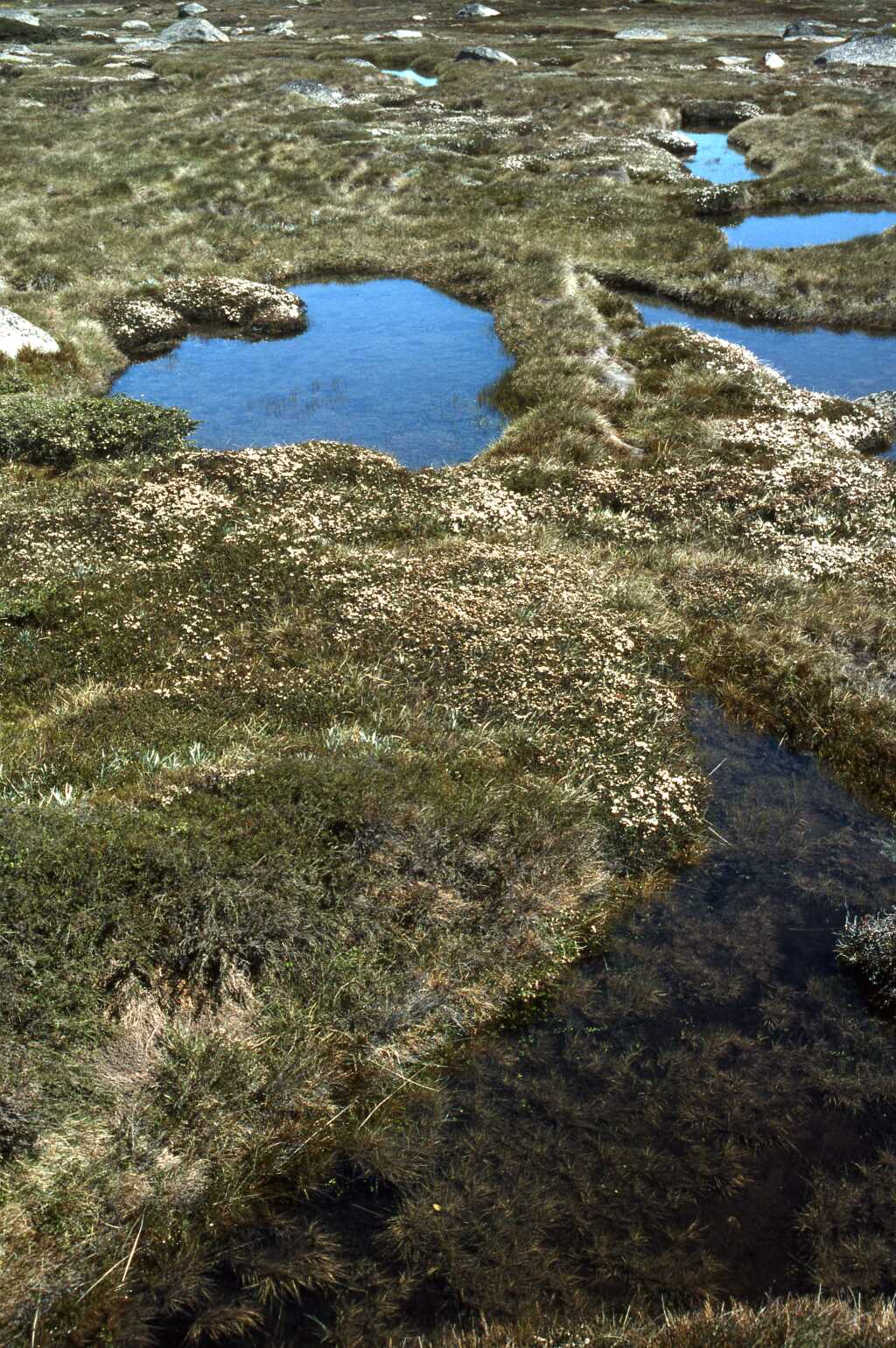Epacris glacialis
(F.Muell.) M.GrayProstrate to decumbent shrub to c. 30 cm high, sometimes rooting from lower branches; branchlets glabrous or occasionally minutely pubescent. Leaves suberect to widely spreading, rhombic to broadly obovate, 1.8–3.5 mm long, 1.5–2.5 mm wide, glabrous, shallowly plano-convex, obscurely keeled beneath, venation obscure; apex obtuse, slightly incurved; margins smooth to minutely serrulate, ± thickened; base usually cuneate; petiole indistinct or to c. 0.3 mm long. Flowers sessile to subsessile, forming small terminal clusters to c. 1 cm long; bracts 10–16; sepals ovate, 2.8–5 mm long, obtuse; corolla white, campanulate, tube 2–3 mm long, slightly shorter than the calyx, lobes spreading, 2.5–3.5 mm long, obtuse; anthers enclosed or partly exserted; ovary glabrous, nectary scales truncate, style straight-sided, 0.8–1.3 mm long, glabrous. Flowers Dec.-Feb.
NIS, HNF, VAlp. Also NSW. Restricted to the Bogong High Plains where sometimes locally plentiful in and around the margins of subalpine-alpine bogs, along creeks through moss beds and in gravelly soakages.
Albrecht, D.E. (1996). Epacridaceae. In: Walsh, N.G.; Entwisle, T.J., Flora of Victoria Vol. 3, Dicotyledons Winteraceae to Myrtaceae, pp. 464–509. Inkata Press, Melbourne.
 Spinning
Spinning

